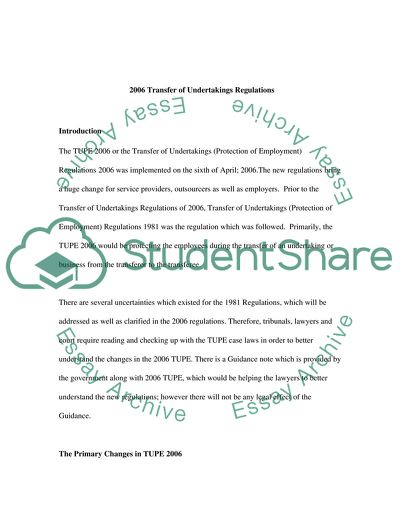Cite this document
(Transfer of Undertakings Regulations Essay Example | Topics and Well Written Essays - 3750 words, n.d.)
Transfer of Undertakings Regulations Essay Example | Topics and Well Written Essays - 3750 words. https://studentshare.org/law/1732589-to-what-extent-have-the-2006-transfer-of-undertakings-regulations-clarified-the-law
Transfer of Undertakings Regulations Essay Example | Topics and Well Written Essays - 3750 words. https://studentshare.org/law/1732589-to-what-extent-have-the-2006-transfer-of-undertakings-regulations-clarified-the-law
(Transfer of Undertakings Regulations Essay Example | Topics and Well Written Essays - 3750 Words)
Transfer of Undertakings Regulations Essay Example | Topics and Well Written Essays - 3750 Words. https://studentshare.org/law/1732589-to-what-extent-have-the-2006-transfer-of-undertakings-regulations-clarified-the-law.
Transfer of Undertakings Regulations Essay Example | Topics and Well Written Essays - 3750 Words. https://studentshare.org/law/1732589-to-what-extent-have-the-2006-transfer-of-undertakings-regulations-clarified-the-law.
“Transfer of Undertakings Regulations Essay Example | Topics and Well Written Essays - 3750 Words”. https://studentshare.org/law/1732589-to-what-extent-have-the-2006-transfer-of-undertakings-regulations-clarified-the-law.


